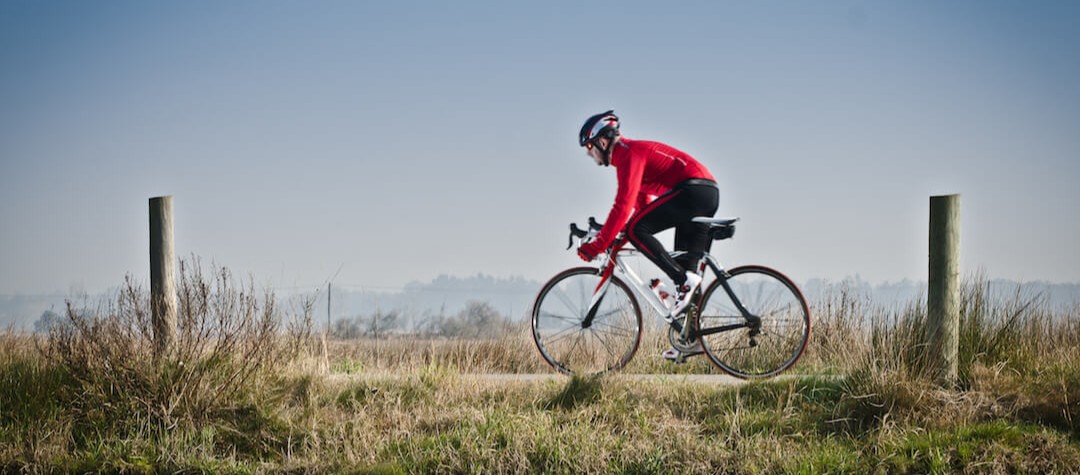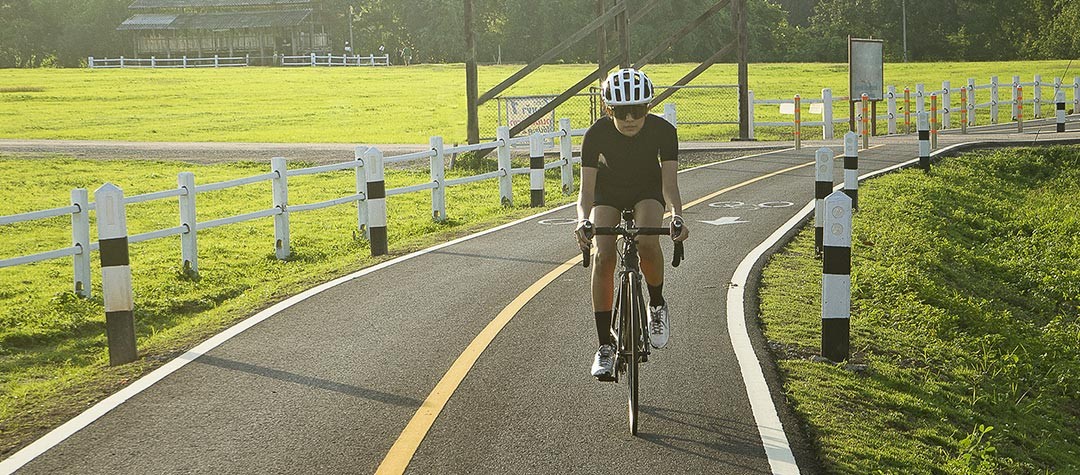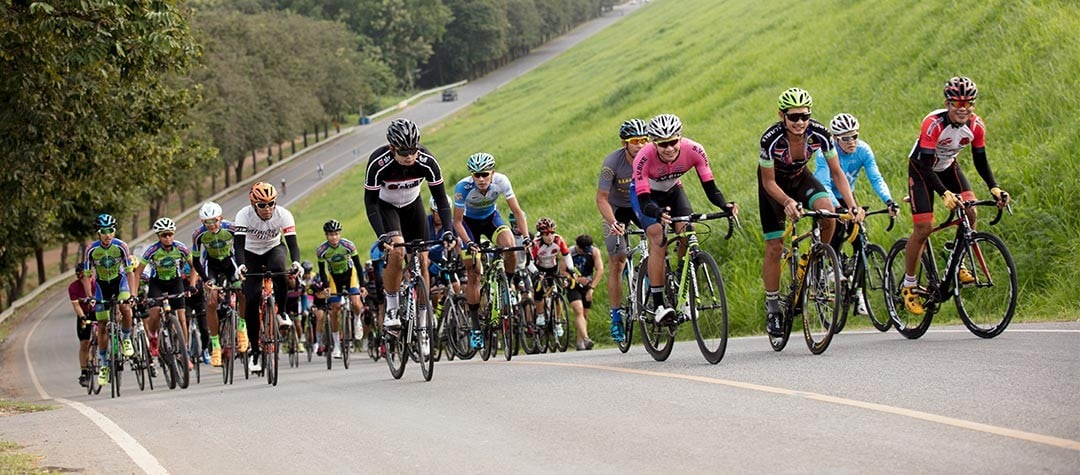Setting up a road bike correctly is vital if you want to ensure maximum riding efficiency and prevent injury.
Correct set up of your bike and the position you are in when you ride can have a major bearing on your riding comfort and efficiency. For best performance and injury prevention it is important to set up your bike in the correct way for your specific requirements. Our cycling position guide should help you get it right.
The correct riding position
There is no such thing as the correct position, only the correct position for you. The set up for a road bike will be different for each person as each individual has different sizes for our arms, legs, torsos and any other part of the body. As such, what is comfortable for one cyclist may not be so for the next when it comes to road cycling.
While we can’t provide a cyclist the perfect riding position, we can suggest a few basic set up tips which can provide you with a ride close to perfection, which you can then adjust accordingly over time to meet your own requirements.
The advantages of maintaining the correct cycling position include:
- Greater comfort
- More efficient riding
- Improved bike handling
There are many variants when setting up a cycle, but many people get it wrong from the outset by choosing a road bike that is the incorrect size for them. Other details to consider which will help determine the correct frame size for your bike are saddle height, knee position, reach, hand position, and foot position. A look at each of these in turn will help determine the final size of the cycle best suited to the rider.
Saddle height
The saddle height is measured from the top of the bicycle seat to the pedal when it is at the bottom of its turning circle. When the pedal is at the bottom of the stroke, the cyclist’s legs should not be fully stretched out, but there should be a slight bend of around 25 degrees from a straight line.
Less than this means the rider doesn’t allow their leg muscles to operate near maximum extension where they are most efficient, while more bend disrupts your pedaling stroke and can affect the knees. Similarly, if the cyclist rocks back and forth in the saddle, then it is considered too high.
If the cyclist rocks back and forth in the saddle, then it is considered too high.
The most common means of setting the correct saddle height is to set it at 109 per cent of the inside leg (the distance between the crotch and the ground, in bare feet). The extra 9 per cent allows for the extension of the ball of the foot below the heel. However, it is important to take into account the height of the cleats or shoes being worn by the rider, so it is best to set the bike saddle at 109 per cent and then raise it by the thickness of the sole.
Knee position
The position of the knee relative to the bike pedal also needs to be taken into consideration. To check this, hold the pedals in a horizontal or level position. A plumb line from the centre of the knee joint should be vertically above or just behind the axle centre of the crankarm. If the knee is slightly in front of the axle centre of the pedal, this tends to force the rider out of position when riding hard.
Reach
This is the distance between the shoulders and the top brake levers when the cycle rider is sitting in the more upright position. The correctly set reach should allow the rider to sit an angle of around 45 degrees to the top tube of the cycle.
The correctly set reach should allow the rider to sit an angle of around 45 degrees to the top tube of the cycle.
Reach can be adjusted by adjusting the length of the handlebar stem. A correct setting allows reduced muscular strain in the neck and muscles, and also means that breathing is unrestricted leading to improved performance.
Hand positions
The bike handlebars should be positioned slightly below the level of the top of the saddle. Bear in mind that if the handlebars are too low it can cause pain in the lower back and the shoulders. A significant bend in the elbow, with a near horizontal forearm, is good and helps reduce shock from the road.
Bike handlebars are shaped to give the rider three positions where they can comfortably grip - the tops, hoods and drops.
Tops - these are quite literally as they sound the top straight portion of the handlebars.
Hoods - the hands grip the brake level hoods at the top of the curved portion of the handlebars.
Drops - the hands hold lower down the curve on the dropped or curved section of the handlebars.
When riding long distances cyclists can suffer pain in the hands and this can be helped with use of gloves and bar tape on the handlebars. Varying the position of the hands on the handlebars can also help.
Pedal foot position
The foot position is mainly determined by the adjustment of the shoe cleats . Generally speaking, the ball of the foot should be over the pedal spindle to produce maximum efficiency and reduce the risk of injury. Incorrect positioning can force the leg into an unnatural twist, reducing performance but also increasing the risk of knee injury. Cleats positioned too far forward on the shoe can produce excessive ankle movement, leading to the possibility of Achilles strain.
The cleat should be adjusted so that the foot is directly in line with the cycle’s direction of travel and not splayed out, although some minor adjustment can be allowed for those with a natural splay of the foot in one direction or another.
Bike frame size
The size of the frame is measured from the top of the frame at the point where the seat post is inserted, down to the centre of the axle carrying the pedal arm (bottom bracket). Typically women have shorter legs than men and need to use smaller frames than men of a similar height. Manufacturers offer cycles tailored specifically for men and women taking into consideration the differences in arms and legs.
Conclusions about your bike set up
If all this information about setting up your bike for the optimum ride has still left you still feeling a little unsure, then good advice can usually be had from local cycle retailers and cycling clubs. Most bike stockists will readily help out and provide you with a cycle best suited to you and make the necessary adjustments to get you on your way, while club members are only too keen to pass on the benefit of their vast cycling experience.
Many specialist shops also offer a bike fit service where you can go along complete with bike and full kit, including shoes and cleats, and have your bike set up for you. The expert will ask you to ride your bike on a turbo trainer and then measure, analyse, and make the necessary adjustments to your bike so it is set up exactly for you. To many this is money well spent, but you can read on to find out whether a bike fit is worth it .















